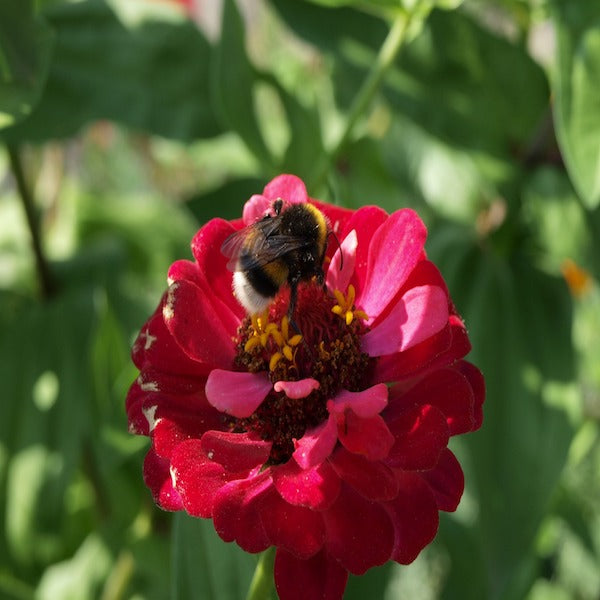5 Types of Pollinators And How to Attract them
•Posted on June 28 2020

According to the Food and Agricultural Organization (FAO), close to 75 percent of the world's crops that produce fruits and seeds depend on pollinators for sustained production.
In this post, we discuss five types of pollinators and how you can attract them to your plants.
1. Bees

Bees are arguably the most important pollinators across the globe. Bees are responsible for pollinating over 110 edible plants, including apples and strawberries.
They are especially attracted to brightly colored yellow or blue flowers. As such, do not use red flowers to attract these workhorse pollinators because bees don't see red.
The tiny hairs on bees pick up pollen whenever it is drinking nectar from a flower and transfers it to the next flower.
Flowers that attract bees include poppies, clovers, bee balm, and coneflowers. These plants have the brightest flowers and most nutritious nectar.
2. Hummingbirds

Hummingbirds move from one flower to the next in search of nectar that helps boost energy for flight.
They use their long beaks to reach nectar deposited at the bottom of the flowers.
As they drink nectar, pollen is deposited on their beaks and faces. The pollen will be transferred to the next flower to achieve cross-pollination.
If you are looking to attract hummingbirds use any plant with red, orange, or white tubed shaped flowers.
The flowers should be strong to support the weight of the hummingbird.
3. Butterflies

Just like bees, these beneficial insects are also essential pollinators that ensure several species of plants are sustained.
However, because they have tall and slender bodies, they can't pick as much pollen as bees. Attracting these pollinators is effortless.
Butterflies are attracted to several brightly colored flowers of any color, including red, yellow, orange, or blue.
The flowers should be flat to enable smooth landing and takeoff.
4. Lemurs

Species of lemurs, especially the black and white ruffed lemurs, are among the world's most significant pollinators.
The animal pollinates several types of fruit species, including tall trees of up to 40 feet high.
Typically, lemurs reach the pollen by opening the flower using their broad snout and tongue in search of nectar.
As the animal is feasting, pollen will deposit and stick to its fur. You can attract this excellent pollinator using any fruity plant. That is of course, only if you live in an environment that supports a lemur population!
5. Honey Possum

Unlike what their name suggests, honey possum doesn't eat honey. These mouse-like pollinators live off nectar.
As they drink nectar, their nose will be dusted by pollen, which is then transferred to the next flower.
You can attract this species using eucalyptus and Banksia flowers.
Grow With Greenway
When planting flowering plants that attract pollinators, ensure you use water-soluble fertilizers to achieve proper growth and development. At Greenway Biotech, we have eco-friendly fertilizers that won't harm pollinator's life when applied.
Finally, although there are many types of pollinators, those that can fly are generally the best at transferring pollen faster and efficiently. The pollinators mentioned here contribute immensely to our existence.
Don't Forget the Fertilizer
The best way to keep your pollinator friendly garden thriving, is by adding eco-friendly fertilizer to your soil.
Shop our fertilizer collection below to find something your plants will love!
Related Posts:
Comments
0 Comments
Leave a Comment